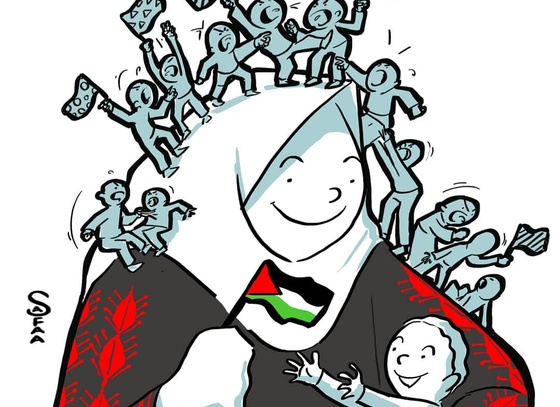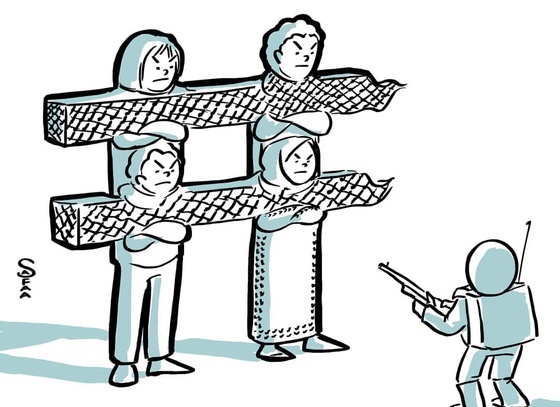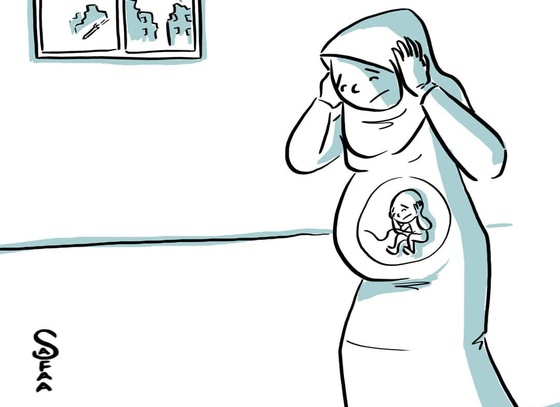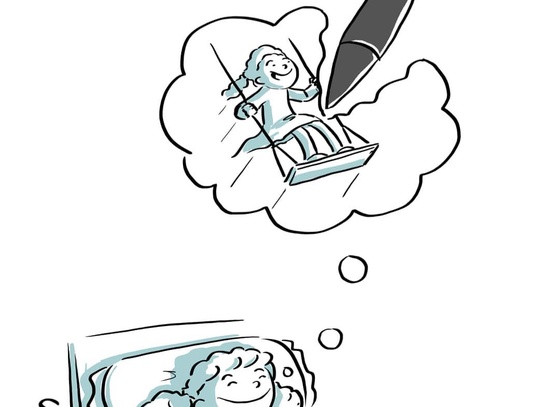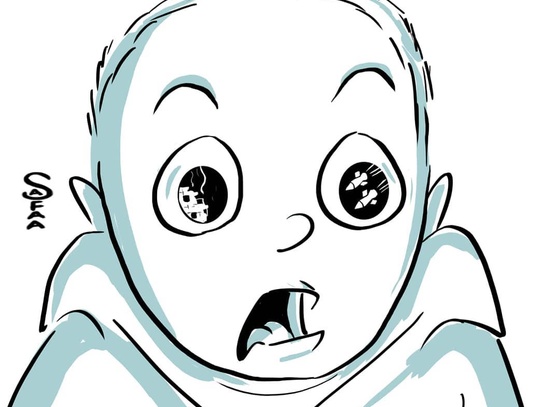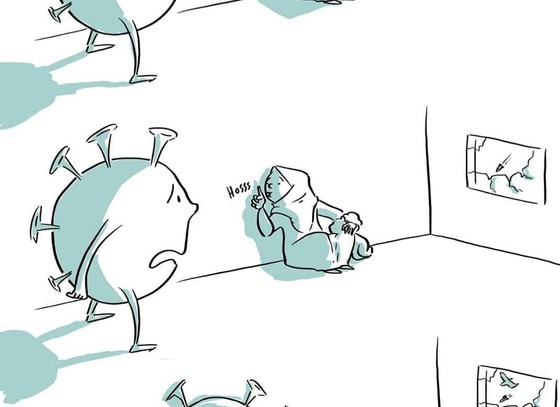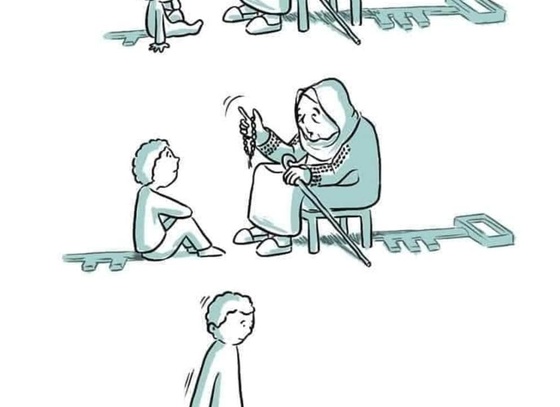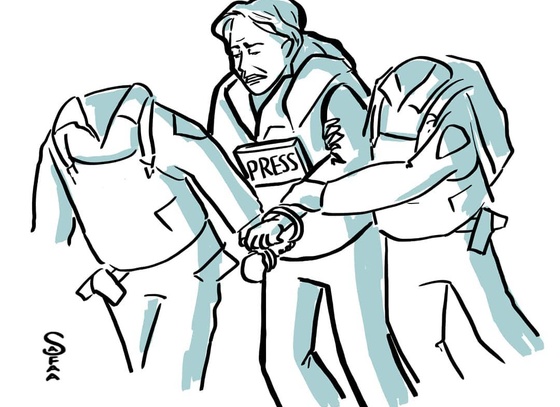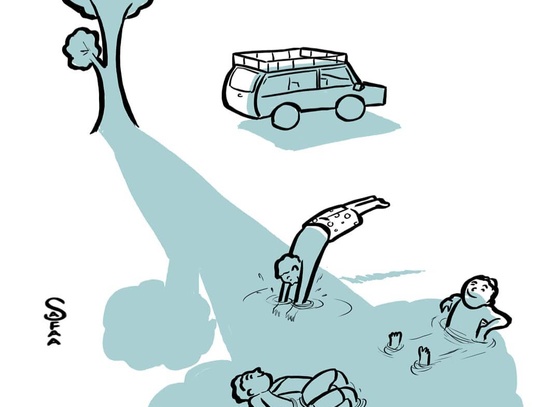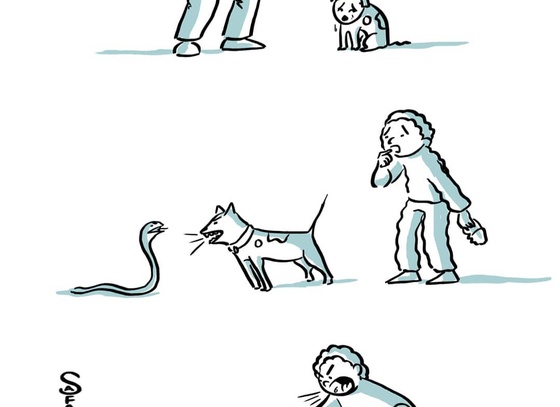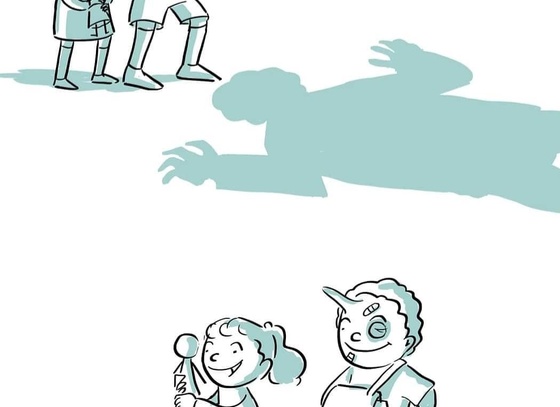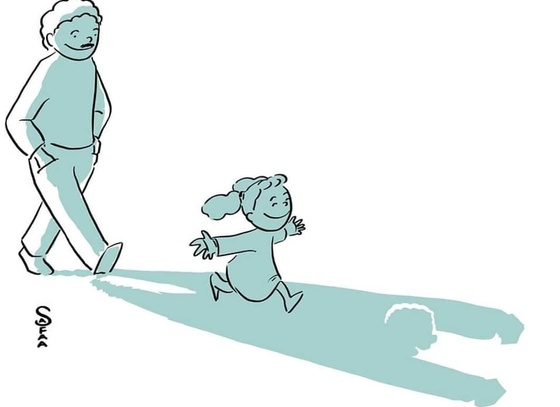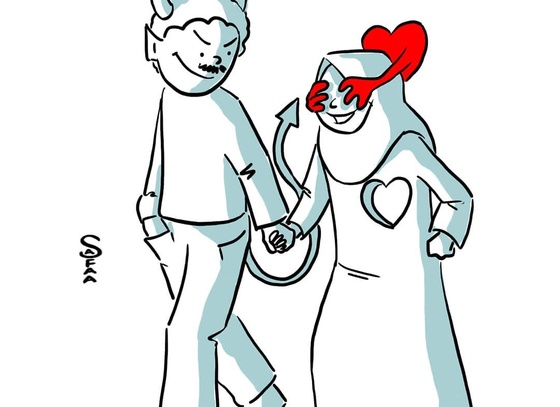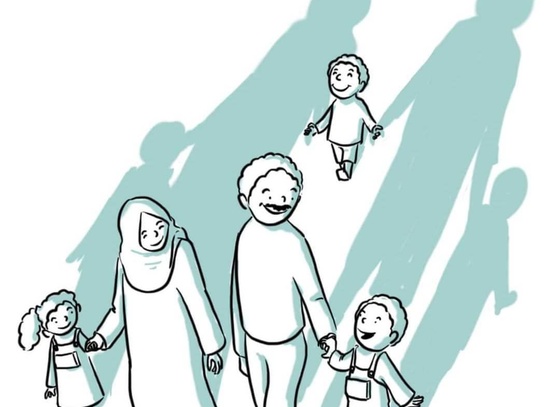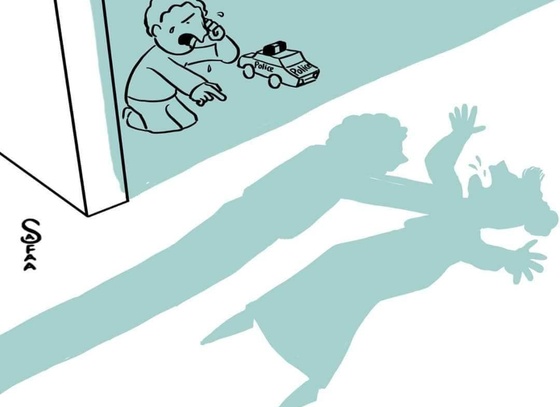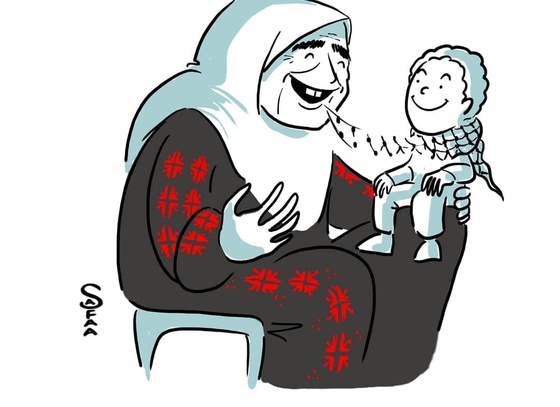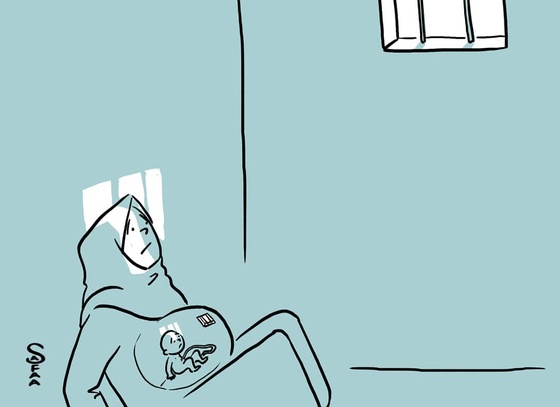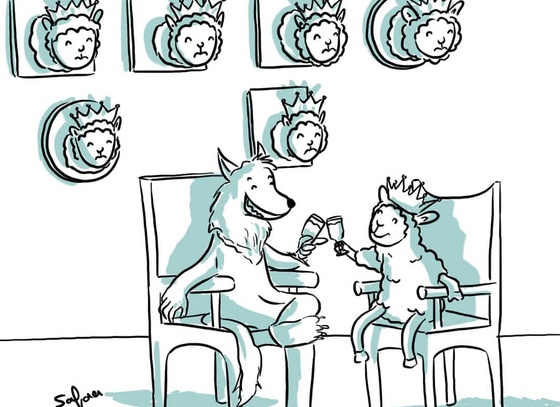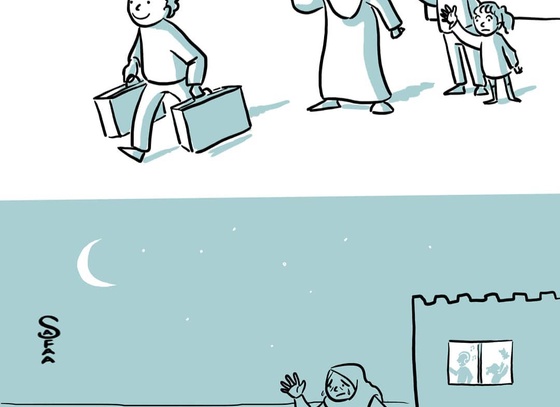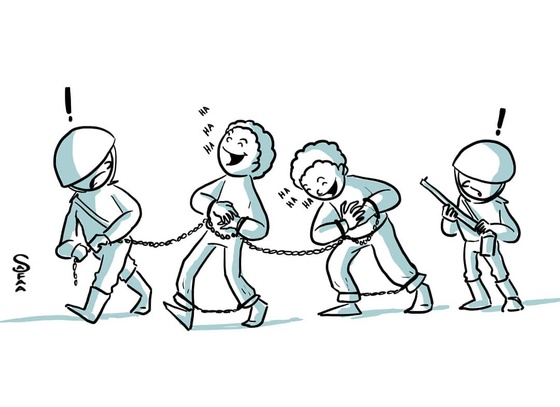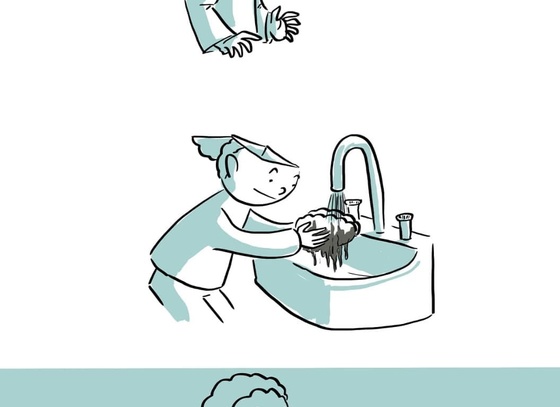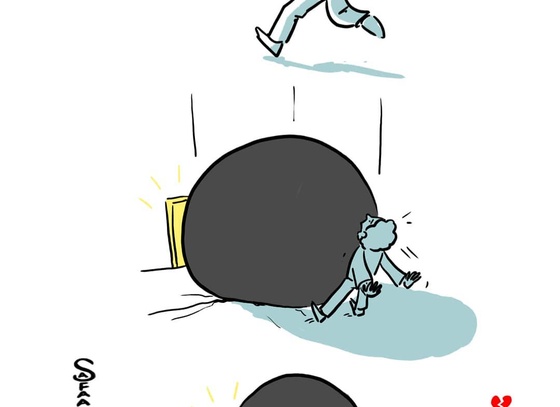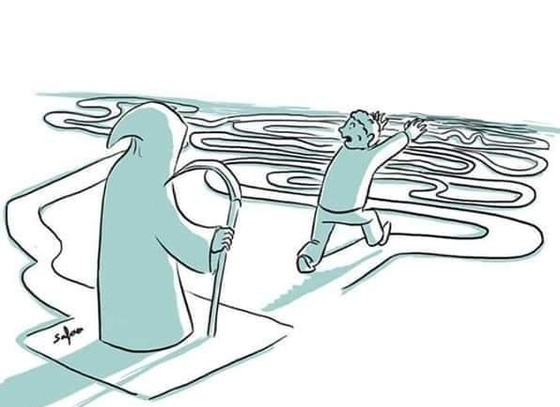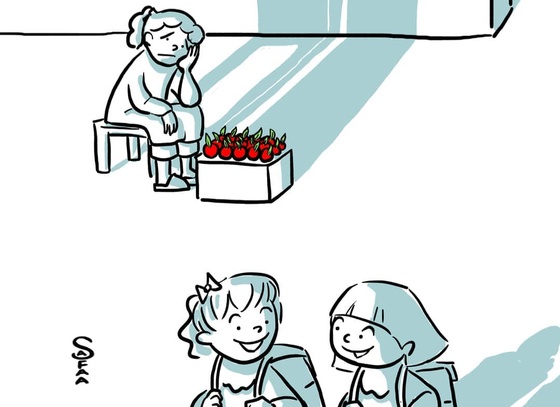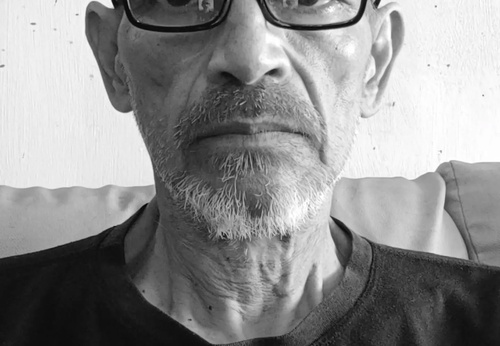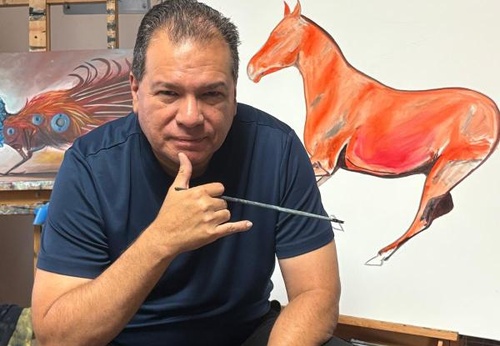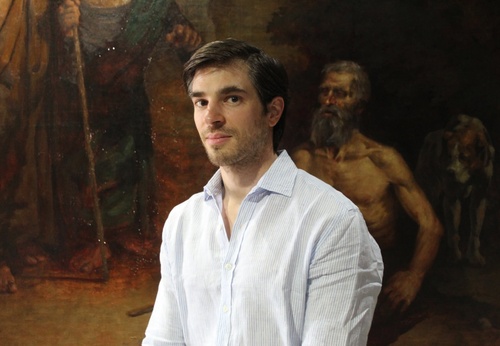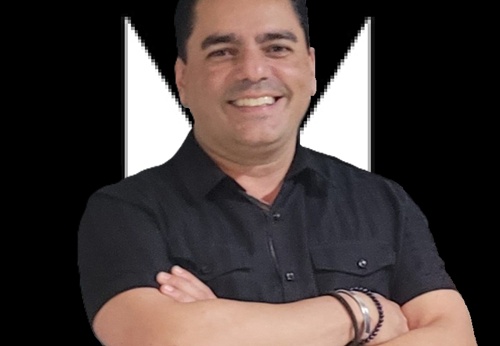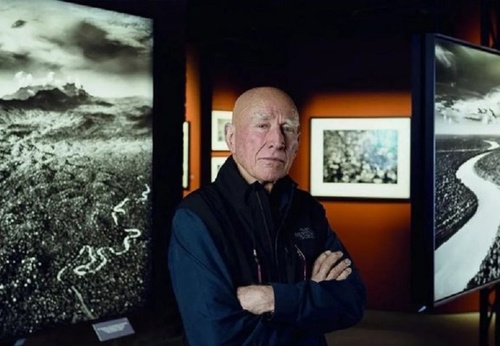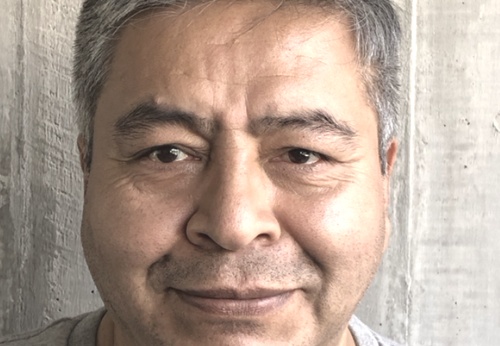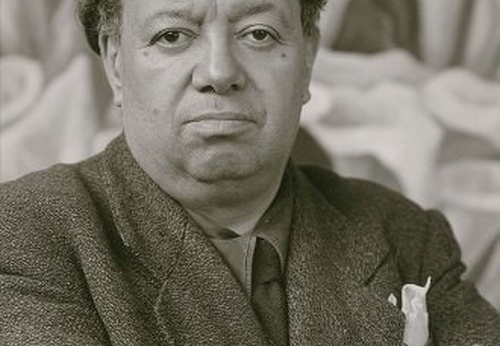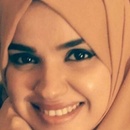
Safaa Odah
Every night, Safaa Odah struggles with her drawings under the unreliable light powered by Gaza's four hours a day of electricity. She sits across her table and outlines the atrocities she has come to witness on the besieged strip of land she considers home. The editorial cartoonist has spent the last nine years of her life rushing to draw some of Gaza's most pressing problems as citizens continue to resist the Israeli occupation. Gaza has been under blockade since 2007, when the ruling Hamas party came to power, prompting Israel and Egypt to partially seal their borders. On nights when Safaa's family duties last longer than expected, her first stroke is interrupted by a sudden darkness that envelops her work, her home, and the rest of the besieged strip of Palestinian land. “That's when ideas stay in my head, sometimes for days, rotting or morphing into something new,” she said. When she finally puts them down in writing, the juxtaposition of Safaa's innocent drawing style and the gravity of the subject is striking. Her work almost always focuses on the realities of Gazans today. The latest drawings of her suggest that she has matured, perhaps forcefully, as a result of the increasingly dire state of the Gaza Strip. "Apart from not being recognized, the situation in Gaza takes away any ambition or passion one has," she said. "But not once in nine years have I doubted what I want to do." After nine years of little recognition, her work is beginning to be celebrated both at home and abroad. In a published drawing, she shows Death hooded and tense, almost parallel to the ground, pushing a box full of children. In the background, clouds of black smoke represent the burning tires of the Great March of Return, in which more than 60 Palestinians, eight of whom were children, were killed by Israelis. In another sketch published earlier this month, she depicts a Palestinian mother smiling as she sleeps and holding her haloed child. Another of her works shows paper airplanes arching over an interlocking construction of the Israeli apartheid wall; She describes the difficulties Palestinians living in the West Bank face in communicating with others in their own villages behind the wall. The subject matter, he says, is almost always humanitarian, but when it is as polarizing as the Palestinian crisis, politics almost inevitably seep into his work. In one published drawing, Safaa shows an outstretched hand in military clothing handing a photograph of a child to a series of bullets waiting in line. “People took it as they wanted, but I stick to what I believe is a humanitarian fight, a fight for people to live,” he said. His work sometimes draws the ire of conservatives. His theme is not unique to Gaza issues, as it challenges preconceived ideals of Muslim womanhood. “Sometimes I'm more confident about these issues, I analyze them and try to get people to think about what they really mean,” he said. Regardless of the resistance he faces, Safaa continues to work steadfastly. She remembers what a professor once told her during her master's degree in psychology: everyone has talent, it's just a matter of finding out what it is. "This is my talent, this is what Safaa is," she explained. "In Gaza, it is difficult to follow your dreams, but I think I have found myself and I continue to learn more about who Safaa is in each drawing."

